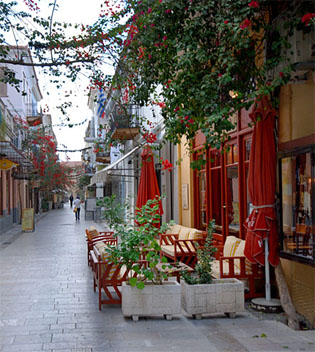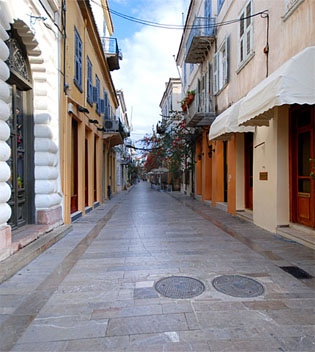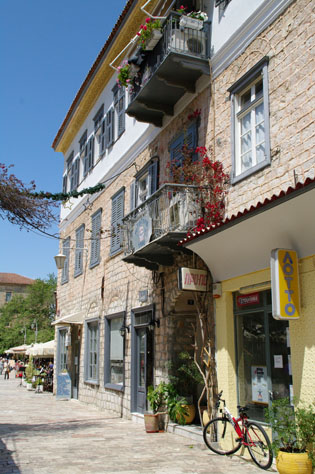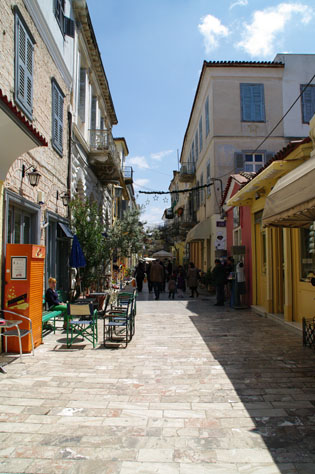The ''Megalos Dromos'' (Great Road)
| The 'Megalos Dromos' or 'Great Road', today known as Vasileos Konstadinou Street, was built to European specifications, on the initiative of Ioannis Kapodistrias, the first governor of the new Greek state. It was the most important road in the city in the 19th century, and this is why it was known as 'megalos' or 'great'.
In order to make way for the road, the church of Aghios Nikitas, which stood more or less in the middle, was demolished. The 'Megalos Dromos' led from the Governor's Mansion in Syntagma Square, Nauplion's central square, and to the Venetian arsenal, the current Archaeological museum. |
||
  |
||
| Today, along the length of the road, there are still some buildings from the times of Kapodistrias and Otto. They were built in the neo-classical style, and characterised by the symmetry of their facades. About half way along the 'Great Road' once stood the Xenos Residence, where Ioannis Kapodistrias spent the first part of his stay in Nauplion. This house burned down in 1862.
Another important neo-classical building is that which housed the municipal gallery. It dates from the time of the Venetian occupation of Nauplion, but it was rebuilt in the time of Kapodistrias. Its doorway is in the austere renaissance style. Today, the building has been restored and has been ceded to the administration of the department of theatrical studies of the University of the Peloponnese. |
||
  |
||
| The 'Great Road' along with Staikopoulou Street, which runs parallel, comprise the most important thoroughfares for local residents and visitors to city. There are shops along the length of both, and one can sit at one of the beautiful refreshment stands in the 'Great Road' or eat in one of the picturesque taverns in Staikopoulou Street.
Despite the passing of time, the Nauplians still call this road 'great', to the surprise of visitors to the city, since this road is not really large: the parallel Amalias Avenue is much bigger. |
||
| The exact location of the Great Road can be found in Section Map. | ||



